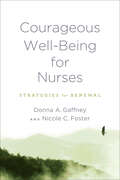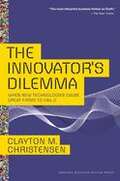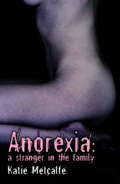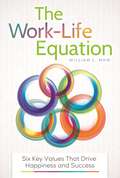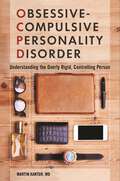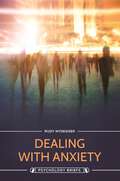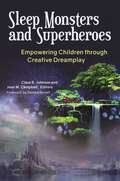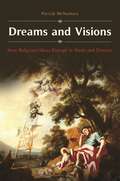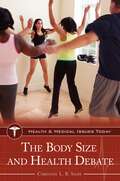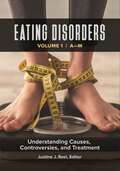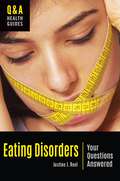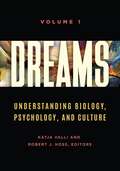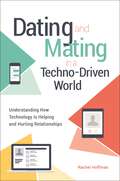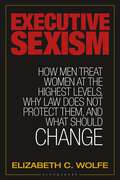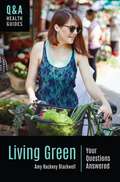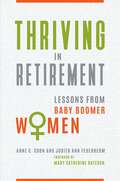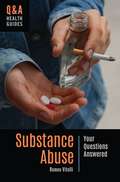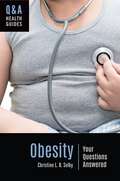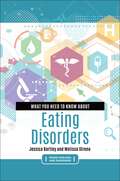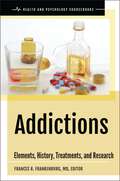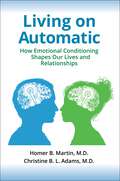- Table View
- List View
The Innovator's Dilemma: When New Technologies Cause Great Firms To Fail (Management Of Innovation And Change Ser.)
by Clayton M. ChristensenNamed one of 100 Leadership & Success Books to Read in a Lifetime by Amazon Editors An innovation classic. From Steve Jobs to Jeff Bezos, Clay Christensen's work continues to underpin today's most innovative leaders and organizations. The bestselling classic on disruptive innovation, by renowned author Clayton M. Christensen. His work is cited by the world's best-known thought leaders, from Steve Jobs to Malcolm Gladwell. In this classic bestseller-one of the most influential business books of all time-innovation expert Clayton Christensen shows how even the most outstanding companies can do everything right-yet still lose market leadership. Christensen explains why most companies miss out on new waves of innovation. No matter the industry, he says, a successful company with established products will get pushed aside unless managers know how and when to abandon traditional business practices. Offering both successes and failures from leading companies as a guide, The Innovator's Dilemma gives you a set of rules for capitalizing on the phenomenon of disruptive innovation. Sharp, cogent, and provocative-and consistently noted as one of the most valuable business ideas of all time-The Innovator's Dilemma is the book no manager, leader, or entrepreneur should be without.
Anorexia: A Stranger in the Family
by Katie MetcalfeKatie Metcalfe takes readers through the daily struggle with this potentially lethal obsession. It is a harrowing account of her triumphs and tragedies on the long road to recovery after being hospitalized at 15. We learn of Katie's constant battle with 'the voice' when her pride at improving her health is overshadowed by the fear of over eating.It is a story of a young girl at war with herself and anyone who fights to keep her alive. However, Katie Metcalfe's book is more than a personal journey - it is the story of the impact of her illness on her family.With remarkable candour Katie's parents and siblings tell of the shocking impact on close relatives - when anorexia creates a stranger in the family. Katie's honesty combined with her talent for writing, gives a real sense of the horror of anorexia and its power to dominate lives. It is a true account of a family's hard won victory over a disease that kills.
The Work-Life Equation: Six Key Values That Drive Happiness and Success
by William L. MawThis book supplies a simple, memorable, and effective formula to solve problematic behaviors in the work environment and life in general. An invaluable guidebook, it will help readers move beyond mediocrity and achieve happier, more successful lives.The Work-Life Equation: Six Key Values That Drive Happiness and Success is for the millions of people and business managers who are surrounded by bad behavior—with its attendant mediocre or unsatisfying results—at work and in their private lives, but who hope and dream for happier and more successful lives. The book begins with a frank explanation of the need for self-awareness and self-improvement, then describes how the "winning formula" and the equation for happiness and success in work-life—(H,S) = f(4C,2R)—can be applied via six types of behaviors to effect sweeping changes. The formula means Happiness and Success can be achieved by (is a function of) Cooperation, Consideration, Compassion, Courtesy, Respect, and Responsibility. The book focuses not just on the meaning of these values but also on how to "better live" them. It concludes with a self-assessment tool for the individual, team, or organization to complete that enables objective measurements of behaviors and identification of areas of potential improvement.Dismissing the familiar, corporate value clichés, the author focuses on six key values most readers probably learned as kids but have forgotten about in adulthood—or didn't realize were still apt and relevant. The book provides priceless information and guidance for all readers but will be especially appreciated by those in the corporate workplace interested in self-improvement and success, educators and business students, executives looking to shift their firm's behavioral atmosphere in a positive direction, and individuals seeking inspiration and hope in their daily lives.
Obsessive-Compulsive Personality Disorder: Understanding the Overly Rigid, Controlling Person
by Martin Kantor MDThis unprecedented work is an invaluable resource for therapists treating patients with obsessive-compulsive personality disorder (OCPD), for individuals suffering from OCPD, and for friends, family, and coworkers of those with OCPD.Although a significant number of individuals suffer from obsessive-compulsive personality disorder (OCPD), most of these people see themselves as being perfectly normal. In actuality, they are missing out in life due to their being compulsively prompt, counterproductively perfectionistic, and excessively penurious. This book explains what OCPD is, making it clear how it differs significantly from OCD; explains the thought processes and desires that give rise to the counterproductive defense mechanisms of OCPD; and identifies the approaches and methods that can allow such afflicted individuals to break through their character armoring and become rehumanized.In this book, Martin Kantor, MD, presents information to defuse the many manifested symptoms of OCPD: anxiety, indecision, unreasonable perfectionism, and difficulty in compromising. His explanations and methods will give the hopeless succor, move the stalled forward, and foster interpersonal cooperation and flexibility in the stubborn, while simultaneously enhancing the OCPD individual's social performance thus increasing his or her chances for interpersonal, relational, and occupational success. Kantor also identifies the social manifestations of OCPD and describes how to move idiosyncratic, rigid bureaucracies toward accomplishing what should be their most important mission: helping those who are in need and seeking comfort.
Prescription Drug Abuse: A Reference Handbook (Contemporary World Issues)
by David E. NewtonThis outstanding resource guide for students and young adults provides an introduction to the history of prescription drug abuse that explains how this problem has arisen and examines the social, political, economic, and health issues associated with prescription drug abuse in modern society.Evidence suggests that both adults and youth are abusing a wider range of prescription drugs and abusing them more frequently than has been the case in the past. Prescription drugs are the second most common class of drugs abused by Americans, more than twice as commonly abused as cocaine, and five times as commonly abused as heroin. This book provides readers with information about the specific health effects that can result from using certain types of medical chemicals, particularly opioid analgesics, stimulants, depressants, and hallucinogenics; explains the most important factors that have led to the growth of prescription drug problems; and reviews the current status of the issue in the United States and other nations.Readers will learn about the dangers associated with the use of prescription drugs for nonmedical purposes, the methods that have been put in place and are being developed to prevent the abuse of prescription drugs, and the trends in prescription drug misuse, with possible explanations for these trends. The book also reviews some of the steps being taken by governments and other organizations and agencies to combat the problem of prescription drug abuse.
Dealing with Anxiety: Understanding, Coping, And Prevention (Psychology Briefs)
by Rudy NydeggerA concise, accessible introduction to anxiety covering everything from its causes to its symptoms, available treatment options, and prevention.While anxiety is commonly associated with modern stresses and problems, few realize that disorders of this kind have existed since the beginning of time. What defines "anxiety" as a mental health condition? Who gets it and why? This book looks at this highly treatable condition that is responsible for many lost days of school and work and contributes to rising health care costs.Mental health practitioner Rudy Nydegger addresses the full spectrum of anxiety conditions, examining how they are treated and considering the advantages and disadvantages of each therapy method. From myths and misconceptions to the various scientific theories surrounding anxiety, the author dissects the various disorders stemming from this psychological issue, including obsessive-compulsive behaviors, post-traumatic stress, and phobias; examines the physical responses of our organs to stress—from our skin, to our heart, and to our immune system; and analyzes the epidemiology of those affected. The work concludes with tips for dealing with and preventing anxiety disorders.
Sleep Monsters and Superheroes: Empowering Children through Creative Dreamplay
by Clare R. Johnson Jean M. CampbellWorld-renowned contributors across several disciplines reveal how dreams can aid and empower children in daily life.Children can feel powerless in waking life, a fact that is often reflected in their dreams. This book shows how to take an active role in guiding children's dreams to help grow their confidence and improve their coping skills for real-life difficulties. Contributors from across various fields provide simple techniques to help children utilize dreamwork as a conduit for creative discovery and empowerment.Each chapter includes case studies and methods for working in practical ways with children, explaining what may trigger nightmares for children and how "monster" dreams can be guided to become "superhero" dreams. Essays encompass a spectrum of children's dreams with experts discussing dreams of trauma, dreams as a reflection of emotional and physical development, dreaming in the community, spiritual or religious dreams, lucid dreams, dreams during wartime, and dreams of death, among others. Throughout the work, the narrative discusses the use of dreams as teaching aids for use in art therapy, storytelling, and self-empowerment.
Dreams and Visions: How Religious Ideas Emerge in Sleep and Dreams (Brain, Behavior, and Evolution)
by Patrick McNamara Ph.D.A standout resource on the emerging field of applying neuropsychology and the latest findings in sleep and dream research to religious experience, this book investigates the proven biological links between REM dreams and religious ideas, covering past and current schools of thought in both the science of dreams and the science of religion.Across time and around the world, billions of people with highly dissimilar backgrounds and cultures have felt spiritual or religious inspiration that shaped their lives and supplemented their mental strength—and in many cases, this inspiration came via a dream. The "how" and "why" of this common phenomenon is one that science has largely failed to explain. In this book, nationally recognized behavioral neuroscientist Patrick McNamara taps the latest science in sleep and dreams as well as neuropsychology to investigate one facet of the answer from the "inside out"—the human brain's role.The first study of its kind in an emerging field, Dreams and Visions: How Religious Ideas Emerge in Sleep and Dreams provides a comprehensive summary of past theory and examines the latest science on dreams, REM sleep, cognitive approaches to religion, and neuroscience approaches to religion. Readers will come away with an in-depth understanding of how and why god beliefs and spiritual convictions so often emerge in our dreams. Dedicated sections address special dream types like visitation dreams, nightmares, precognitive dreams, "big" dreams, lucid dreams, paralysis dreams, twin dreams, and more.
The Body Size and Health Debate (Health and Medical Issues Today)
by Christine L. SelbyHas the connection between body size and overall health been overstated for decades? This book examines how our dogged efforts to eradicate obesity may be doing more harm than good and explores alternative ways to measure and encourage health.It's fair to say that Americans are obsessed with body size and weight—whether it's in the name of health and disease prevention or the idealization of unrealistically thin proportions. But trying to lose weight and drop clothing sizes is healthy, right? Or is it not healthy, in many cases?In this book, the latest in Greenwood's Health and Medical Issues Today series, Certified Eating Disorder Specialist and Certified Sport Psychology Consultant Christine L. B. Selby, PhD, examines the often confusing information—and misinformation—that exists on obesity and its connection to overall health. She provides a broad examination of this timely topic, addressing the rate of obesity in the United States, questioning the appropriateness of BMI to gauge overall health and well-being, discussing controversies related to weight and health including excessive dieting, and providing real-world scenarios that clearly illustrate major concepts related to weight and health. The book also summarizes a relatively new and still controversial approach to improving well-being that takes the focus off the number on the scale. But can individuals really be happy and healthy at any size
Eating Disorders [2 volumes]: Understanding Causes, Controversies, and Treatment [2 volumes]
This encyclopedia offers a variety of resources for readers interested in learning more about eating disorders, including hundreds of reference entries, interviews, scholarly debates, and case studies.While many people may reflexively imagine an anorexic or bulimia teenage girl upon being asked to think about eating disorders, eating disorders are a form of mental illness that can take many forms and affect individuals of all genders, ages, and ethnic backgrounds. In fact, an estimated eight million people in the United States struggle with an eating disorder, making eating disorders one of the most prevalent forms of mental illness in America. This two-volume encyclopedia comprehensively examines eating disorders as the forms they can take; their causes and potential complications; and how they can best be treated and prevented. It also examines the influence had by cultural factors such as the fashion industry, television and movies, and social media. More than just a simple A-to-Z reference, Eating Disorders: Understanding Causes, Controversies, and Treatment also includes valuable features such as Q&A interviews with those affected by and working to combat eating disorders, case studies, scholarly essays that voice opinions in key debates, and a directory of resources for individuals seeking help.
Eating Disorders: Your Questions Answered (Q&A Health Guides)
by Justine J. ReelThis book is an approachable introduction to eating disorders; one of the most common—and dangerous—forms of mental illness. The information, guidance, and resources offered make it a valuable tool for anyone struggling with issues surrounding food, weight, and body image.In the United States today, an estimated 20 million women and 10 million men meet the diagnostic criteria for an eating disorder, and millions more have disordered eating habits and a dysfunctional relationship with food. Whether their disorder is diagnosed or not, individuals struggling with these issues face serious and potentially lifelong physical and emotional consequences as a result of their behaviors. Eating Disorders: Your Questions Answered, a part of Greenwood's Q&A Health Guides series, provides clear, concise information for readers who want to learn more about these often misunderstood psychiatric illnesses. In addition to discussing the most common eating disorders, their consequences, and treatment, this book also explores how eating disorders develop and how they can be prevented.Each book in this series follows a reader-friendly question-and-answer format that anticipates readers' needs and concerns. Prevalent myths and misconceptions are identified and dispelled, and a collection of case studies illustrates key concepts and issues through relatable stories and insightful recommendations. The book also includes a section on health literacy, equipping teens and young adults with practical tools and strategies for finding, evaluating, and using credible sources of health information both on and off the internet—important skills that contribute to a lifetime of healthy decision-making.
Dreams [2 volumes]: Understanding Biology, Psychology, and Culture [2 volumes]
by Robert J. Hoss Katja Valli Robert P. GongloffThis two-volume set examines dreams and dreaming from a variety of angles—biological, psychological, and sociocultural—in order to provide readers with a holistic introduction to this fascinating subject.Whether good or bad and whether we remember them or not, each night every one of us dreams. But what biological or psychological function do dreams serve? What do these vivid images and strange storylines mean? How have psychologists, religions, and society at large interpreted dreams, and how can a closer examination of our dreams provide useful insights?Dreams: Understanding Biology, Psychology, and Culture presents a holistic view of dreams and the dreaming experience that answers these and many other questions. Divided thematically, this two-volume book examines the complex and often misunderstood subject of dreaming through a variety of lenses. This collection is written by a large and diverse team of experts and edited by leading members of the International Association for the Study of Dreams (IASD) but remains an approachable and accessible introduction to this captivating topic for all readers.
Dating and Mating in a Techno-Driven World: Understanding How Technology Is Helping and Hurting Relationships (Sex, Love, and Psychology)
by Rachel HoffmanAuthored by a sex therapist who regularly works with clients wanting to improve their relationships, this book explains how technology can create conflict or additional anxiety and discloses techniques to help individuals gain confidence or strengthen their personal relationships.The statistics are telling: 85 percent of all adults use the Internet; 88 percent use email; 91 percent own cell phones; 56 percent own smartphones; 73 percent send and receive text messages; and 67 percent use social networking sites. The advent of personal communication devices and ubiquitous connectivity has dramatically shifted the way we communicate, and as a result, the way we date and pursue relationships has changed. The share of 18- to 24-year-olds who use online dating has roughly tripled from 10 percent in 2013 to 27 percent today. Modern dating techniques and technology-enabled interpersonal communication have resulted in very distinct emotional side effects.Dating and Mating in a Techno-Driven World explores dating in our 21st-century world with a unique approach, providing understandable information for anyone who is dating or seeking a long-term relationship while also serving as a clinical guide for therapists who want to learn how to treat individuals and especially couples presenting with some sort of issue related to technology. Instead of simply offering an analysis of the trends that are occurring, author Rachel Hoffman addresses the interpersonal problems and conflicts that result from digital or remote communication and "courting" and explains how to treat them. The topics addressed include utilizing dating apps, the effects of social media on relationships, and how technology can be distracting in relationships. Each chapter of the book supplies a case study or vignette, an analysis of the situation, research findings related to the topic, and clinical information that identifies the implications for therapists working with individuals or couples with a similar experience.
Prescription Drug Abuse (Health and Medical Issues Today)
by Robert L. Bryant Howard L. MDThe misuse and abuse of prescription drugs has reached epidemic proportions in recent years, yet many individuals still believe, incorrectly, that their use is without risk. This book explores those risks as well as controversies surrounding this public health issue.Prescription drugs are powerful tools that can be used to treat a variety of ailments, from pain to anxiety to insomnia. Their potency and perceived safety also make them targets for abuse. The misuse of prescription drugs can have dire health consequences for individuals and high economic costs for society, among other dangers. A part of Greenwood's Health and Medical Issues Today series, this book identifies prescription drugs that are abused and the consequences such abuse can have for both individuals and society, and discusses the many questions relating to how to address this public health issue. Part I explores the current magnitude of the prescription drug abuse epidemic in the United States, which drugs are most frequently abused, how individuals obtain these medications, and the consequences of abuse. Part II delves into the controversies surrounding the topic, including the roles that doctors and "Big Pharma" play and legal issues regarding prosecution of prescription drug abusers. Part III provides a variety of useful materials, including case studies, a timeline of critical events, and a directory of resources.
Motivation: The Manager's Key to Closing the Commitment Gap
by Marvin R. Ph.D.This book shows managers how to identify opportunities for increasing productivity by enhancing commitment and provides tools for building a high-performing team.More than ever, senior and frontline managers are tasked with the development and maintenance of highly productive teams—a formidable challenge in all situations. Organizational directives for "lean," highly responsive, change-adaptive workforces have created an environment in which every aspect of productivity must be examined and improved in the quest to meet increasingly competitive global goals. About 30 percent of productivity is lost from knowledge workers who withhold undetected discretionary effort because managers fail to tap into motivation dynamics that impact the level of individual and team commitment. This book gives managers the tools they need to motivate their teams to deliver significantly better results.Readers of Motivation: The Manager's Key to Closing the Commitment Gap will gain a foundational understanding of motivation from theoretical, experimental, and anecdotal perspectives and identify key areas of potential untapped productivity. The book explores the changing workforce values, economic pressures, and the revised compact between employers and employees that create the commitment gap that results in untapped productivity. Managers will see how to go through a diagnostic and relationship-building process that creates powerful and productive dialogues, resolves conflict, and pinpoints behaviors and identifies tools to build a fully committed, high-performing team.
Executive Sexism: How Men Treat Women at the Highest Levels, Why Law Does Not Protect Them, and What Should Change
by Elizabeth C. WolfeIn the long shadow of a presidential election rife with charges of sexist actions, this book explains how very common such behavior is among executives, why law doesn't protect victims, and how female professionals can bring change.Who do you report sexism to when the offender owns the company?"Overt and intentional sexism" against women by powerful men in politics, business, and academia and across the white-collar world in public and private institutions is common, according to author Elizabeth C. Wolfe, a conflict analysis and resolution specialist. Female executives, even at the pinnacle of their careers, remain vulnerable to their male colleagues. In this book, Wolfe details how men treat women at the highest levels and the result of their actions.Women executives from nine countries explain how their career advancement and earning potential are continuously harmed though overt sexism, sexist social behavior, and microaggressions--those damaging behaviors that are in a gray area but are not legally actionable. She further examines why law does not protect these women: sexism, like racism, is a way of thinking and so cannot be legislated. Each "-ism" has legal protections against documentable actions, but ways of thinking, socializing rituals, and microaggressions are not actionable by law. Wolfe details the minds of sexists and describes how sexism is "socialized," and then explains how to name each sexist behavior, address it, and take action to stop it.
Living Green: Your Questions Answered (Q&A Health Guides)
by Amy Hackney BlackwellThis book makes "green living," as it relates to teens and young adults, an approachable subject. The information and resources it comprises make it valuable for anyone who is interested in living a more sustainable and environmentally friendly life.Our actions have a powerful impact on the environment: how we heat and cool our homes, the types of cars we drive, and even the foods we consume all contribute to the health of the planet. Living Green: Your Questions Answered, an installment in Greenwood's Q&A Health Guides series, provides clear, concise answers to readers' questions about living a more eco-conscious life. In addition to explaining fundamental concepts such as carbon footprint, climate change, and sustainability, this book offers practical steps readers can take in their everyday lives to reduce their environmental impact across a number of areas, including energy usage, transportation, food and water, and even fashion and personal care products.Each book in this series follows a reader-friendly question-and-answer format that anticipates readers' needs and concerns. Prevalent myths and misconceptions are identified and dispelled, and a collection of case studies illustrates key concepts and issues through relatable stories and insightful recommendations. The book also includes a section on health literacy, equipping teens and young adults with practical tools and strategies for finding, evaluating, and using credible sources of health information both on and off the internet—important skills that contribute to a lifetime of healthy decision-making.
Thriving in Retirement: Lessons from Baby Boomer Women
by Anne C. Ph.D. Judith Ann FeuerhermThis important book shares insights derived from surveys, interviews, and focus groups conducted with a diverse group of first-wave Baby Boomer female professionals (born 1946–1956). These individuals changed the workplace in the 1970s and are now changing views of retirement.In Thriving in Retirement: Lessons from Baby Boomer Women, profiles of highly diverse professional women are interwoven with information gleaned from surveys, interviews, and focus groups, thereby allowing readers to identify with individuals similar to themselves, whether through profession, education, personal concerns, or demographics. In spite of dissimilarities in backgrounds, career paths, and personal experiences, these women have much in common. As they leave their full-time careers, they are committed to exploring new post-career identities while finding ways to stay engaged, share their professional expertise, and develop deeply held personal interests and passions they may have set aside in the past. The Baby Boomer women profiled here reveal details such as the early influences on their education and career choices, the aspects of their careers they enjoyed the most, the opportunities and roadblocks they encountered, as well as how they balanced marriage and family responsibilities with their careers. Readers will benefit from the examples set by these women, whose diversity and varying experiences provide inspiration for nearly anyone of retirement age who finds herself wondering "What's next?"
Substance Abuse: Your Questions Answered (Q&A Health Guides)
by Romeo VitelliThis book provides readers with a basic understanding of substance abuse, especially as it relates to teens and young adults, plus resources and guidance for overcoming it.Whether it's alcohol, tobacco, recreational drugs, or prescription medications, substance abuse can have devastating consequences for an individual's short- and long-term health. It can also have far-reaching impacts on psychological well-being, relationships, and finances. A part of Greenwood's Q&A Health Guides series, Substance Abuse: Your Questions Answered provides clear, concise information for readers interested in or struggling with this difficult subject. It explores the substances most frequently abused in the United States, the causes and effects of their abuse, treatment options, and the role that popular culture and the media have in shaping our understanding of these behaviors.Each book in this series follows a reader-friendly question-and-answer format that anticipates readers' needs and concerns. Prevalent myths and misconceptions are identified and dispelled, and a collection of case studies illustrates key concepts and issues through relatable stories and insightful recommendations. The book also includes a section on health literacy, equipping teens and young adults with practical tools and strategies for finding, evaluating, and using credible sources of health information both on and off the internet—important skills that contribute to a lifetime of healthy decision-making.
Obesity: Your Questions Answered (Q&A Health Guides)
by Christine L. SelbyThis book serves as an accessible resource for teens who want to learn more about obesity. The information and guidance it offers make it a valuable tool for young adult readers with questions or concerns about their weight.Obesity—represented by a BMI over 30—may be easy to define, but its causes and consequences and how individuals and agencies should address it are not as clear. Is obesity simply the result of eating more calories than one burns, or are other factors involved? Can an individual be obese and healthy? How does obesity affect psychological and social health? Are public health campaigns targeted at reducing obesity helping or hurting? Obesity: Your Questions Answered, a part of Greenwood's Q&A Health Guides series, answers these and other questions related to this high-interest topic. Each book in this series follows a reader-friendly question-and-answer format that anticipates readers' needs and concerns. Prevalent myths and misconceptions are identified and dispelled, and a collection of case studies illustrates key concepts and issues through relatable stories and insightful recommendations. The book also includes a section on health literacy, equipping teens and young adults with practical tools and strategies for finding, evaluating, and using credible sources of health information both on and off the internet—important skills that contribute to a lifetime of healthy decision-making.
What You Need to Know about Eating Disorders (Inside Diseases and Disorders)
by Jessica Bartley Melissa StrenoThis book provides readers with information to better understand eating disorders, written in accessible language for teens and young adults—those most at risk for these potentially deadly mental disorders.Eating disorders, including anorexia nervosa, bulimia nervosa, and binge eating disorder, are some of the most commonly diagnosed mental disorders. They are also the deadliest: in the United States, an individual dies as the result of an eating disorder every hour.What You Need to Know about Eating Disorders is a part of Greenwood's Inside Diseases and Disorders series. This series profiles a variety of physical and psychological conditions, distilling and consolidating vast collections of scientific knowledge into concise, readable volumes. A list of "top 10" essential questions begins each book, providing quick-access answers to readers' most pressing concerns. The text follows a standardized, easy-to-navigate structure, with each chapter exploring a particular facet of the topic. In addition to covering basics such as causes, signs and symptoms, diagnosis, and treatment options, books in this series delve into issues that are less commonly addressed but still critically important, such as effects on loved ones and caregivers. Case illustrations highlight key themes discussed in the book, accompanied by insightful analyses and recommendations.
Addictions: Elements, History, Treatments, and Research (Health and Psychology Sourcebooks)
by Frances R. FrankenburgThis book offers an accessible and comprehensive yet compact description of various forms of addiction, a disorder suffered by one in every 10 people in the United States.Now thought of as a brain disorder, addiction affects millions of individuals, their families, and society at large. Written by experts who treat people with addiction, this text provides an up-to-date explanation of different addictions with respect to their history, treatments, and related research. Readers will understand the causes, complications, and treatment of addictions after reading this text.Chapters cover the most serious addictions to drugs—alcohol, tobacco, opioids, stimulants, inhalants, and sedative hypnotics—and to highly addictive activity now recognized as a behavioral addiction, gambling. Research into these addictions and treatments for each specific addiction are reviewed. Chapters also consider rapidly changing issues related to addiction, including the increase in deaths due to the opioid epidemic, the evolving legal status of marijuana, and the use of hallucinogens in therapy. In addition to forms of addiction, the text addresses the neurobiology of addiction; brain pathways involved in addiction are just beginning to be understood.
Smoking: Your Questions Answered (Q&A Health Guides)
by Stacy Mintzer HerlihyThis book is an easy-to-use resource for teens wanting to learn more about why nicotine and tobacco are bad for your health and how to quit using them. The information and guidance offered make it a valuable tool for young adults.According to the Centers for Disease Control and Prevention (CDC), approximately seven percent of middle school students and 20 percent of high school students use tobacco or nicotine products. Everyone knows smoking is bad for you, so why do so many teens still smoke? Are e-cigarettes, hookah, and smokeless tobacco safer alternatives? How can individuals stop smoking or support the quitting efforts of friends and family? Smoking: Your Questions Answered, a part of Greenwood's Q&A Health Guides series, answers these and other questions related to this high-interest topic. Each book in this series follows a reader-friendly question-and-answer format that anticipates readers' needs and concerns. Prevalent myths and misconceptions are identified and dispelled, and a collection of case studies illustrates key concepts and issues through relatable stories and insightful recommendations. The book also includes a section on health literacy, equipping teens and young adults with practical tools and strategies for finding, evaluating, and using credible sources of health information both on and off the internet—important skills that contribute to a lifetime of healthy decision-making.
Living on Automatic: How Emotional Conditioning Shapes Our Lives and Relationships
by Homer B. MD Christine B. MDTwo veteran psychiatrists unravel the mystery of how thought and emotional patterns are passed from parents to children, generation after generation, "conditioning" each of us in ways that endure throughout our lives and affect all of our relationships.Living on Automatic not only introduces the concept of emotional conditioning, including how it occurs and becomes entrenched in our minds, but also explains how individuals can "decondition" themselves to become more adept at choosing and negotiating more rewarding relationships. Authored by two psychiatrists, the text draws from more than 80 years of their combined psychotherapy work with thousands of people. The authors focus on helping readers to understand their roles in relationships and to develop more rewarding relationships. Case studies and questions are provided to illustrate emotional conditioning and the personality roles that emerge from it. Readers will learn why people choose the mates that they do; why the ways we learn to relate as children often do not change later in life; and how to observe and engage in introspection to begin to decondition themselves from auto-pilot, knee-jerk emotional responses, allowing for the formation of better relationships with their spouse or partner, children, and other family members.
